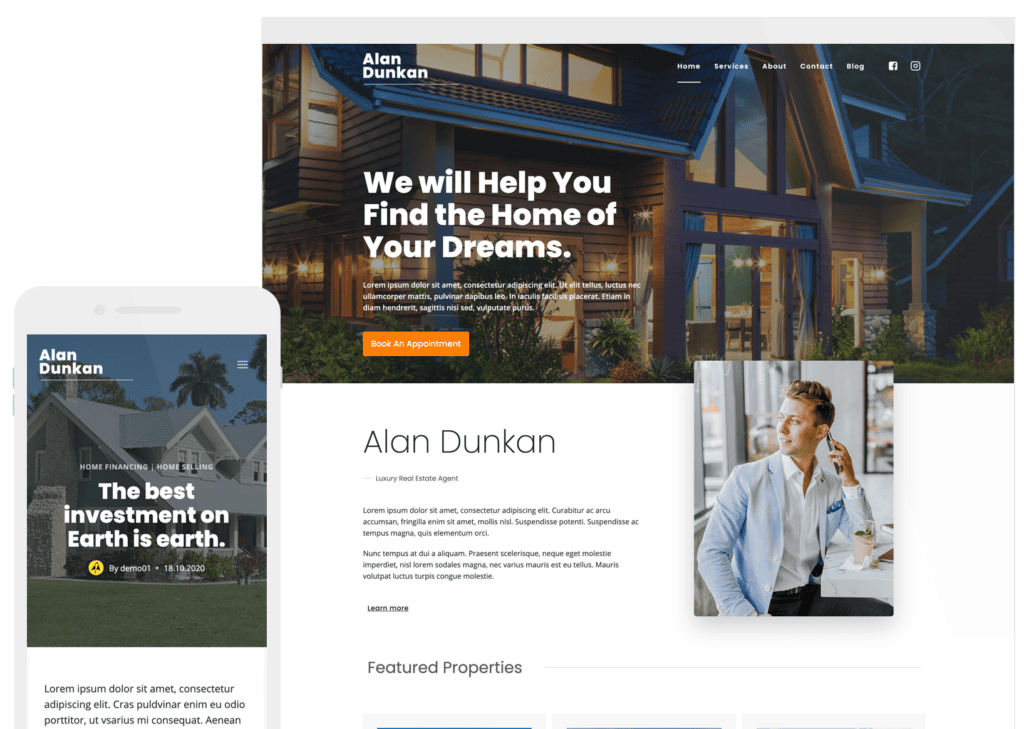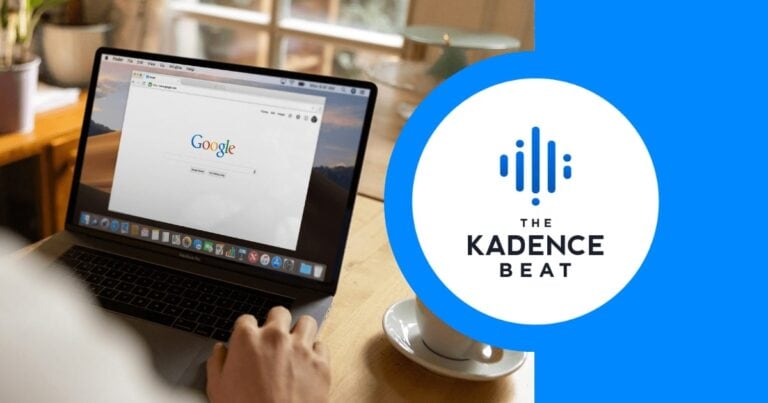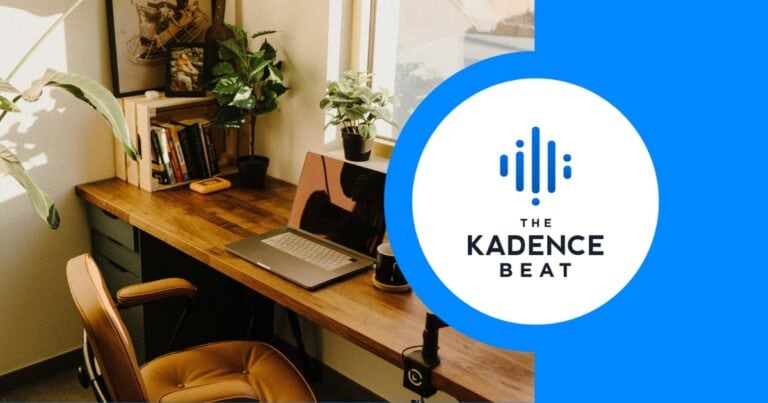Episode 14: Best Practices in Hiring Help for WordPress
We all need a little help getting things done on our WordPress sites sometimes. Maybe that involves hiring a designer, a developer, or maybe you want to hire someone to handle it all for you. In this discussion about best practices for hiring WordPress help, the team talks about everything from deciding when you need help to scoping a project, and the importance of putting your focus on the end user of the site, messaging, and communication. Ben and Hannah also talk a little about their family trip to the Madison Range in Montana while Kathy sweats it out in the Texas heat wave.
Listen via the controls below, or add us to your favorite podcast app.
Timestamps and Links
- 0:00 Introduction & the Ritner family trip to the Madison Range in Montana
- 2:04 Who should you hire for help when you need it?
- 6:04 Where do you go to find help? Kadence Facebook Group | Codeable | Upwork
- 8:29 How do you scope the project?
- 9:22 Evaluating your proposals, what should you look for in a dev/agency/freelancer?
- 14:44 Who provides leadership in the project?
- 16:33 Talking about money first to get on the same page
- 17:31 Scope creep, what is it and how to handle it
- 19:04 It’s all about communication
- 21:49 What’s coming at Kadence
- 23:13 Upcoming iThemes training on Kadence
Transcript
Kathy: This is episode 14 of The Kadence Beat, this is the podcast that helps you create more effective websites with Kadence and WordPress. Alright, you guys, I hear that some summiting has taken place? You guys just got back from like the most awesome vacation. Do tell.
Hannah: We did. We spent three days in the Madison range which is like eastern Montana , kind of near Yellowstone. And it was awesome. We really couldn’t have asked for better weather. Just stunning. My legs were sore though. I’ll say that.
Kathy: Lots of exertion.
Hannah: Yeah, my family doesn’t know chill. It’s like extreme or else nothing happens. It’s usually extreme, but it was great.
Kathy: . Ben, you showed me a picture of where you were at. We have to share that in the show notes, cuz it looks just absolutely amazing.

Ben: Yeah, we hit it pretty perfect. I mean, we had crystal clear weather. In fact, from the top of echo peak, which is what we climbed, which is 11,200 feet, we could see a hundred miles. So we were able to pick out peaks that were a hundred miles away. So we’re looking all the way into Wyoming and Idaho and then parts of Montana.
So it was pretty amazing to get that view. Yeah, I love Montana, and love the outdoors. So getting to just be outside and breathing in all that crisp air. Got to see some goats, even a little baby goat. That was the size of a cat. It’s pretty wild. Mountain goats are very impressive animals.
And so we watched them for quite a while, just climbing around on the cliffs, and even some elk and it was really, really fun.
Kathy: That is just so incredible. And even though I’m trying to immerse myself in the vibe of being on the mountaintop next to snow and mountain goats. I am sweating, as we’re talking. Texas is brutal this year.
But anyway, this week I am so glad you guys are getting away and enjoying life. That’s what this is all about. It’s part of what the whole Kadence vibe is about. But this week, I wanted to talk a little bit about, you know, getting some stuff done and sometimes people are developing a site and it’s like, I need help.
Or I have a vision for a site and I really want this done exceptionally well. And I want to leverage somebody else’s expertise in order to make this happen. So I wanna talk about how you hire someone to help you with your site. How do you hire an expert WordPress developer or an agency? And should it be a developer? Should it be in an agency? When do you decide that you need to hire someone to help you with your site? Do you guys have thoughts on this?
Ben: Yeah, absolutely. I think obviously it depends on where you’re at and what you’re doing and different things, but I think what’s important that I would say a lot of people, miss is like, let’s say they have an existing site and like what they want is a redesign. So they find a designer to redesign it.
And I would say that’s like the wrong path. I think wherever you’re at, you need to start with your messaging and figure out what it is. That’s the messaging behind your website, your brand, what the goals are. And so if you need help with messaging, that’s where I would start to go find somebody like find a marketer that can help you with your messaging.
Cause you know, then down the road you can get somebody to help you with your website and then design everything like that. But if you have your messaging down, then the design and the end result is gonna be so much better. So I think wherever you’re at and whoever you’re gonna hire.
I think it’s gotta start with like, do I have my messaging down? Do I have the goals of my website are down. Then I can start talking about like, okay, I wanna hire a designer to design this, or I wanna hire a copywriter to help me with, getting the copy on my website better. Things like that.
Kathy: Hannah, in support, we work with a lot of people who build sites for other people. Are we seeing a lot of people who are just like freelance developers, a lot of agencies, a mix, of those? Who are the types of people that are using Kadence to build sites for other people.
Hannah: Yeah. Well, I definitely think there’s a wide range of people that use Kadence. Whether it’s one person building a website for their church or somebody who has a hundred websites. And, they’re using Kadence across all those sites. We primarily see those who are building either one website or usually smaller freelance people who come to us for support.
There definitely are times where we recommend hiring a developer. And I think it really depends on A: time. And then B: what you’re trying to get like, are you, are you trying to be the person that knows how to do these things? If so, great. We’ll show you resources to learn them.
But then there are times where it’s like, you know what? This is actually gonna take you way too long to figure out how to learn this code or how to learn this technique. So you should probably just hire someone. We try to give that kind of feedback and we try to learn like, who are you? Who’s coming to us asking for support and then kind of give feedback from there.
But there definitely are times where it’s like, mm, you just need to hire someone, usually a developer or a designer. There are plenty of people that we think need to hire different designers. I’m like maybe you think, you know, design, but seen some interesting sites over the years.
Kathy: Is it the color choices or…
Hannah: It’s all of it. Yeah. It’s the fonts, the eight different fonts. It’s the photos. It’s the misalignment. I mean, it’s simple things. Some people just don’t have that eye, but they wanna learn how to build a website. And I’m like, I’m so glad you wanna learn, but just pull someone alongside you to give you that eye of what looks good together and what doesn’t.
Kathy: My husband used to do this when he started with WordPress, he would go find clip art. And I’m like, we, we can’t use this we have to find a photo. Do people still do that? This caused problems in my marriage. [laughter]
Hannah: Oh, my gosh. I’m sure they do. I don’t see it often, but I could promise you that they do. It’s all out there. I mean, all of it, some people sites I’m like, what were you thinking? But, you know, but they’re trying, and we love that. We love that they’re trying. But sometimes a designer is needed.
Kathy: Yes, definitely. Now, where do people go? Is it better to go somewhere local to find someone that you can actually like sit down with at a coffee shop, and actually look at things together, or are there services that people use where they can find someone who’s perfect for this type of work?
Hannah: Yeah, I think there’s definitely both. The Kadence Facebook page has actually been huge for networking in this way, because people will post questions and then people respond with answers. We actually have a cousin who has found a lot of jobs, just freelance jobs, just from our Facebook page, by commenting on people’s posts and then being like, Hey, if you want further help, like reach out, DM me and I’d love to help you further.
So if you need just like little odds and jobs, I think that’s a great space. I think sometimes too, it’s super helpful to have in person meetings with people and kind of talking face-to-face about what you want, what you’re after, but then there’s obviously tons of resources online as well.
I don’t know what you would add to that, Ben?
Ben: Yeah. I mean, I think that there’s different levels. Most of the Kadence users are going to be wanting to do it and they’re wanting to learn. And that’s awesome. in that case, you’re usually going, like, I need this problem solved. I don’t need a full thing. And so then it’s not that big of a deal that’s local. the best cases for like a local person where you meet at a coffee shop is where you’re like, I actually don’t want any part of this. I need someone to really hold my hand through all of it, the messaging, getting my marketing figured out, my email figured out. I need someone to hold my hand through the whole process and get me the full package.
Whereas, usually with our users, it’s like, I need this really custom, really niche thing done. So then I’m gonna hire a developer to come in, and build that for me. Or I need just help getting this design. But once I have that design, I can recreate that throughout the rest of my site, then using things like Codeable and Upwork can be really great solutions for like that niche. I just have this problem. And once you solve that problem for me, I can recreate the design down the road. In other ways I can, you know, I can kind of follow the pattern. And so that’s where, like it, to me, that’s the bigger differences.
And obviously that doesn’t mean you can’t use local. Because local can do the same thing, but, when I think of wanting to meet at a coffee shop and really talk through like your brand and making sure that everything is designed based on, the messaging and of your brand.
That to me is like where I want a bigger, full package versus, I just need a solution to this page, or I need a solution to this problem I’m having.
Kathy: Okay. Excellent. Great. So really you need. I think scope out what it is that you actually need before you do anything. You can’t just go off and say, I need a website, or I need a redesign and then have it all in your head of this vision of what you want. How does, someone who needs that really best describe what it is that they’re looking for so that they can adequately communicate that to a developer to whoever they envision is solving their problem for them.
Ben: I think using something like our Facebook page to ask questions and even our support forums, sometimes people come in and they don’t know what they actually need. And that’s where we’ll help. We’ll be like, Hey, this is what can be done via a plugin or via solutions we offer.
But this is very custom and you’ll need someone for that. Asking the community at large your questions can help you figure out what you need and how to phrase what you need to hire somebody.
Kathy: Once you have all of that scoped out and you start getting some proposals. Now you’ve got to choose someone to actually do the work. How do you make a good evaluation about what’s a good price for the project? What if you have somebody comes in with a very low price versus somebody who’s charging a lot, how do you evaluate, the work that they are specifying and the prices that they’re giving, what are some good guidelines that you can give people to make a good call on? Who’s going to deliver the best solution.
Ben: I mean, I think seeing past work is a really big indicator and what I would focus on cuz like you, you know, you got sites like Fiverr and stuff like that, where you can see past work. But when a lot of their past work looks like stock and not like actual. Businesses there’s a difference. And you could tell it you’ll be like, okay, that isn’t a real business.
That’s just really pretty, but it’s not actually a real business. if they’re creating really pretty for real companies, when you’re trying to find a designer, it’s somebody who’s able to take, not just abstract ideas and make something really pretty, but actually I’m gonna take your business and create really good content and design. I would be looking for that. If it’s a developer, it’s a little bit different. You’re probably looking more at their reviews because you’re not gonna be able to inspect their code or anything like that. If you need like a custom thing you’re looking for, how well do they communicate, looking in the reviews?
Were they able to solve the problem that you were after? things like that. Or if it’s, you know, I need someone to come in and help with SEO, do they have real people that they’ve worked before that they’re able to show you like, hey, this is an existing website.
I did this for them, that kind of stuff, versus somebody who just created a bunch of mockups, which is, a lot easier to do when you get to kind of do everything versus like, I took what they had and I made it pretty.
Hannah: I think reviews are huge, too. Like what are people saying about this person? And, maybe they have beautiful websites, but it took them six months past the deadline, or if people are saying good things, that’s so huge too. So I think that’s a huge thing to look for.
Kathy: Being able to actually talk to one of your developers customers and say, how did the project go? What did they do really well? Even if you’re hiring a web developer, that’s going to come work internally in your business. Checking references, how were they at a previous employer? I mean, you do that kind of stuff, when you’re going to make a long term commitment that somebody’s going to be on staff. Obviously if it’s just a hundred dollars, help me fix this CSS, versus $10,000, help me build out this entire thing. The more of an investment that you’re going to make, the more you’re going to want to do your due diligence and whoever you are bringing on to do that, whatever investment you’re making. But just being able to ask questions of previous customers and having a conversation, not even just reading reviews, but you know, what was the worst thing that happened? What is the best thing that happened? Would you hire this person again? Do you still have a working relationship with them? Those types of questions are incredibly insightful and letting the customer of that developer really kind of having some space to tell their story. You’ll get a vibe on if someone’s gonna solve your problems for you right away. Won’t you?
Hannah: Yeah, for sure. I think so.
Kathy: Are there things in a proposal? If I get a proposal, I do a request for a proposal of like, okay, here’s the scope of the project and here’s everything that I, I think I need, Does the proposal answer that, but I’m always looking to. Are they giving me something more, something I didn’t think of.
Did they really take the time? Are they just giving me a proposal? Because it’s like, okay, I want your money and I wanna do this work or whatever. Or are they really looking at my request and finding holes where I didn’t provide enough information? Are they asking the right questions? One thing that I’ve always talked about is, for developers is if you understand security include that in your proposals, even if somebody’s not asking for that, it’s just like, is it baked in those types of things that you never consider?
When cuz you have this vision of your project, are they bringing to the table things you didn’t consider and sort of expanding the offering in a way that’s going to be better for you? So those are, some of the kinds of things that I always look for when I’m dealing with anyone. Are they bringing something else to the table that I need that I didn’t think I needed, because that means there’s going to be a good relationship there. They’re actually bringing something to the table that I have never considered.
Ben: Yeah, and I think it’s huge too. When you think through like, if you are doing a website for somebody, you wanna make sure that you’re putting forward, like I’m going to optimize the site. So it’s better for conversions and we’re going to look at even how we lay out things to make. Very much focused on conversions to try to increase conversions.
And I think all of those things can really be something one you wanna look for, are they thinking about how this is going to make me more money or are they thinking about how this is gonna make them more money? And I think if you’re getting that stuff back from them where it’s like, they’re really in their mind, they’re thinking, okay, yes, you want this designed, but really in the end, what you want is to grow your business or what you want is to grow your website.
Making sure that that language, is coming back to you, like they’re gonna be somebody to help you grow versus helping them get money, makes a big difference, in just even the proposal and what I would be looking for, or even like if I was giving a proposal, making sure that I added all of that in.
Kathy: Really good point. Excellent. I think a lot of times people think, okay, they’re taking care of everything. And I know a lot of freelancers and agencies like their biggest pain point is I need this from the customer. You know, I said that this is gonna take six weeks, but it’s gonna take six months if I don’t get any content, if I don’t get the pictures, if I don’t get the things that I need in order to make the site really serve the customer. How should a client make that process smoother? Obviously communication is important, but are there things that when you get into that kind of relationship that you should expect that are your responsibility?
Ben: I think it depends. This goes back to the start. If I have my messaging and I’m hiring you to implement my messaging, then I need to make sure I deliver on all of that to you. I’m getting you that messaging content, I’m making sure that you are seeing, Hey, this needs to be the headline, this needs to be the focus of the first call to action. Here’s the sub things. If you’re hiring someone to help you with that messaging, then they need to be handing you questions like, what is the major problem that your customer is having that you’re helping them with.
It kind of depends on who’s in charge of messaging, if they’re just saying, Hey, I need content and no one is talking about your messaging. This isn’t gonna end well, cuz I’m just gonna get you like, an about us. And my website is gonna end up looking like a big promotion of my company instead of messaging that says, “You have this problem and we solve it for you in these three easy steps and sign up now, and your life is gonna be, perfect.” In short, that needs to be , what you’re doing. So whoever’s in charge of messaging needs to be the one that’s leading that. And if it’s you, then you need to be the one that’s giving that messaging to the designer.
if it’s the person you hired, that’s doing the messaging, then they need to be asking you the questions to make sure they really, really understand your customers and what you’re offering and the solution that you’re giving them.
Hannah: I think another huge thing is talking about finance upfront. Being very firm on this is what my cost is before you even get to anything else. And , Honing on that. I say that because a couple years ago I was doing some freelance stuff on the side and spent a couple days, maybe even like a week going back and forth emailing with this person, they wanted me to make their website. And then finally at the end we get to cost. And I mean, just assuming everyone’s on the same page, you know, this is what it cost for someone to build your website. And so I quote them this price and I never hear from them again, literally nothing. It was so frustrating.
And I was like, man, I should have just upfront been like, okay, by the way, these are my prices for these things. So I think that’s a huge thing to just like, get out the way upfront. Like this is what it’s gonna cost. And even, from a customer standpoint of, this is what I have to pay you. Is this too much or, or is this too little? It’s not gonna be too much, but, um, you know, just know who you’re talking to. Maybe you’re not even in the same ballpark of who you’re reaching out to, or who’s reaching out to you.
Kathy: Right, right. Very good points. Let’s talk a little bit about, maybe we need to define this: scope creep, meaning that you’ve defined, this is the website, or this is the work that’s going to be done. This is the project. This is the deliverables that you’re going to end up with.
And this is how much you’re going to pay for it. And all those things are defined, but then you start developing and then it’s all of a sudden, oh wow. We didn’t think about this other thing. We need to add that. And because we added that, we need to add this other thing and then we need to add these three other things that we weren’t even a part of the original discussion.
How do you recognize that scope creep? How do you recognize it? And then what do you do about it?
Hannah: There’s nothing in life. I hate more than hidden fees.
Ben: Are you talking about from the freelancer side?
Kathy: Yeah, I mean, the, obviously it’s a painful experience from the freelancer side and I don’t know that clients necessarily recognize that they’re doing it sometimes.
Ben: Yeah, I mean, cuz to me it comes down to the freelancer or the agency or whatever, being able to define like, Hey, this wasn’t in our scope. of projects. So it’s going to be more if you wanna do that, this is what that’s gonna cost. but it’s a tricky thing to do because it’s really hard to nail down scope at the point of the proposal completely.
When you have an item on there that says website, that’s not very nailed down. and so I think, that’s mostly on the freelancer or the agency or whatever, to really define, this is what this price includes and anything more is gonna cost more. And then anytime you see it, when they ask for that, be like, Hey, just so you know, this will cost more. Would you like me to do that or not?
Kathy: Yeah, I guess it really boils down to communication. Clear communication, not just. For the proposal itself, but throughout the entire engagement, because it’s a relationship, right? You’re in a relationship no matter if you’re hiring a freelancer or an agency or something in between, you are in a relationship and all relationships come down to communication, which that’s what makes it go well.
And that’s where I think things can fail. I have , a story about one project where I was. getting things done. I guess I was kind of the project lead, but the agency had a project manager as well, who wanted to manage everything in a certain way, but she ended up being sort of this blockade of project management, having to go through all of these procedures and it has to be here and it has to be there and things were getting into the project management system, but they weren’t coming back to me and they weren’t going to.
The developers who were working on it. And so things got kind of stuck with over management and it ended up just one day of me and a developer sitting in slack and getting things done over the course of one day. But it was blocked for weeks because somebody was trying to make sure everything was documented so well and managed so well that communication wasn’t flowing.
It was the weirdest thing. So that’s my cautionary tale of over organization. I think organization is great. So you don’t forget things, but you can over organize things. so towards that end, when you see some warning signs, what do you do? What are some of the warning signs that things aren’t going well in a relationship with a freelancer or a developer or an agency?
Hannah: I think when things appear vague and communication is not clear, or they’re not getting direct answers, you’re kind of getting these roundabout answers. I feel like that would be a warning sign.
Ben: Missing deadlines too.
And then too, just like a lack of focus on your company’s success would be a warning sign. If they’re not trying to make your company or your website or whatever successful , if all the communication isn’t around that that would be a warning for me.
Kathy: I heard an adage that you should hire slow and fire fast that if you start seeing warning signs that you don’t wait to see if things are gonna get better. Nip it in the bud as fast as possible, have a conversation with whoever you’re working with in order to figure out what is going on and give them an opportunity to rectify the problem and to do right. But if it’s not going well to. go hire slow somewhere else, find someone else, rather than waiting around because it’s probably not going to get better. , and it, maybe it’s just not a good fit that that can happen a lot too, I think. Obviously a learning experience around the entire experience anyway.
Let’s talk about what’s new and upcoming with Kadence. Let’s talk about Shop Kit. We’re getting a lot of questions lately about Shop Kit and when it’s gonna be final. I’m seeing a lot of great things happening with Shop Kit; it’s really ready for release soon.
Ben: Yeah, I think one of the last things that’s getting put in is just more and more predesigned product pages and things like that. So in the latest version, we added a few and kind of the whole mechanism for that. And so then what will come up in the next version will be just an easier way to implement some of this with built in designs that you can drop in and experiment with when you’re redesigning a product page through a template.
But yeah, then we’ll be releasing and we’re already looking ahead for the 2.1 and what’s gonna come in that and all the different features. So definitely a lot of work coming into shop kit, but excited for this one. This is a big rewrite, and has a lot of really cool things with just from the new admin panel to all of the updates with each module.
Uh, and then especially the template.
Kathy: Excellent. Very exciting, anything else that we should let our audience know is coming down the pike?
Ben: They can expect to see some design updates on Kadence as we work toward our redesign and our new docs page and everything like that. I think that’s gonna be coming in pretty soon.
Kathy: Yep. Lots of work happening. One thing I wanna mention is that I am going to be doing an iThemes training next Wednesday on the 20th, going over Kadence cloud and the Kadence child theme plugin and how those are being used. We’re gonna show some examples of some really neat implementations where some agency folks. Have created some additional revenue streams, so that could be an interesting thing. If that is your game, you might want to join that. We’ll have a link to sign up for that in the show notes.
Other than that, hey, it’s summertime and the Kadence team needs to be on mountains more, so we’re gonna get this stuff out for you and hopefully empower you so that you can live the life that you want to live wherever it is that you wanna be, at the beach, in the mountains with the entire Type-A Ritner family, climbing to the tops of all these peaks. This is so cool.
Hannah: Yeah, check Instagram. We’ll get some up there this week.
Kathy: Great. Yeah. If you’re not subscribed to our Instagram, that is really where you get the entire Kadence vibe. You should be following us on Instagram. Cool. Excellent. Well, thanks for joining me again this week you guys, thanks for all of you for listening, and we will be back in the next couple of weeks with another edition of The Kadence Beat.
Create Your Website With KadenceWP Today!

Written by Kathy Zant
Kathy is a writer and speaker who helps businesses and people thrive. She creates some of the best content and tutorials about how to get more out of technology, marketing how-tos that help you grow your business, reports on security issues you need to know as they occur, and gives you all the tutorials to stay ahead and secure your life and business.
By Kathy Zant
Kathy is a writer and speaker who helps businesses and people thrive. She creates some of the best content and tutorials about how to get more out of technology, marketing how-tos that help you grow your business, reports on security issues you need to know as they occur, and gives you all the tutorials to stay ahead and secure your life and business.
Updated July 29, 2024




